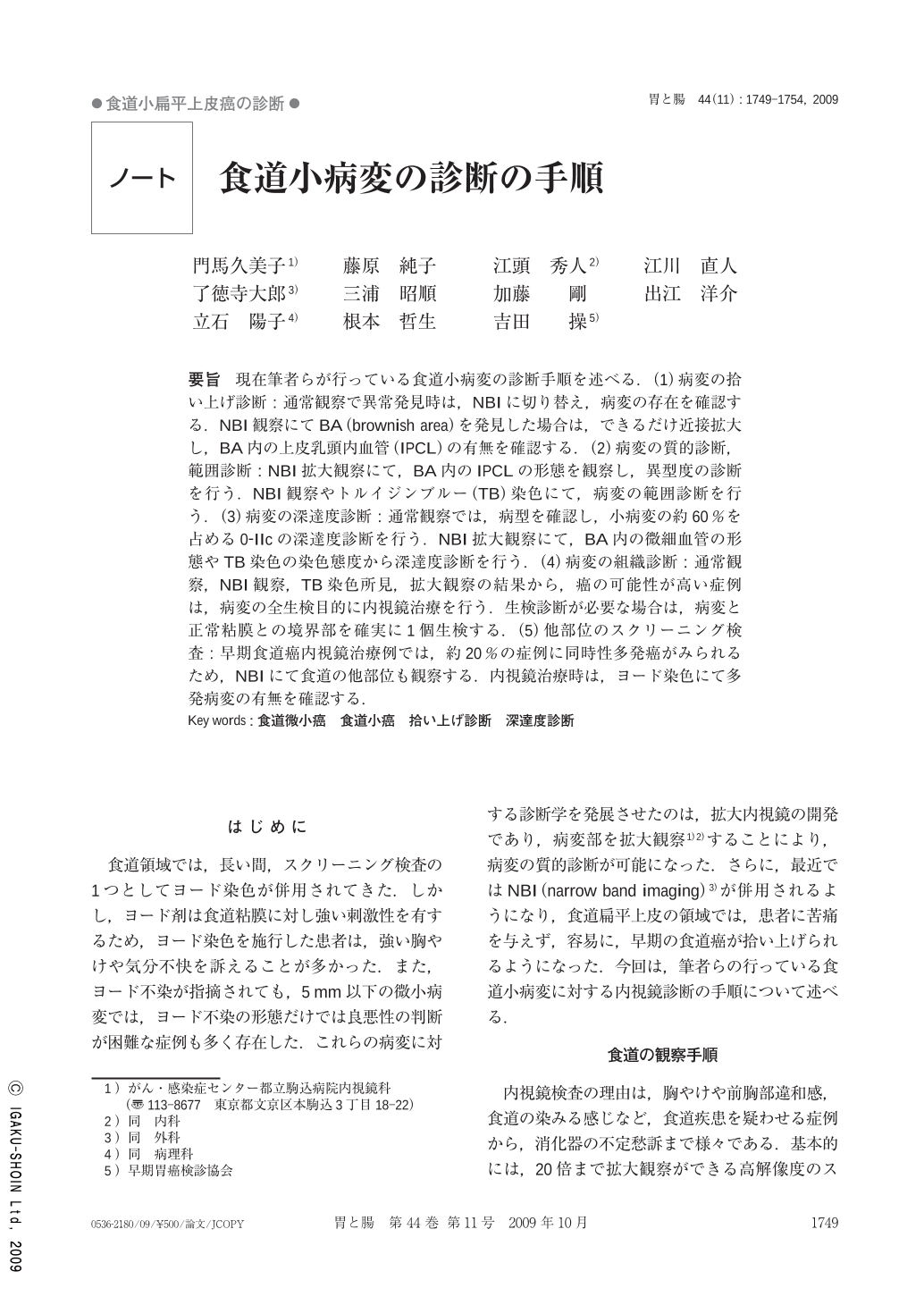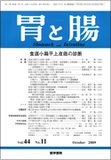Japanese
English
- 有料閲覧
- Abstract 文献概要
- 1ページ目 Look Inside
- 参考文献 Reference
要旨 現在筆者らが行っている食道小病変の診断手順を述べる.(1)病変の拾い上げ診断:通常観察で異常発見時は,NBIに切り替え,病変の存在を確認する.NBI観察にてBA(brownish area)を発見した場合は,できるだけ近接拡大し,BA内の上皮乳頭内血管(IPCL)の有無を確認する.(2)病変の質的診断,範囲診断:NBI拡大観察にて,BA内のIPCLの形態を観察し,異型度の診断を行う.NBI観察やトルイジンブルー(TB)染色にて,病変の範囲診断を行う.(3)病変の深達度診断:通常観察では,病型を確認し,小病変の約60%を占める0-IIcの深達度診断を行う.NBI拡大観察にて,BA内の微細血管の形態やTB染色の染色態度から深達度診断を行う.(4)病変の組織診断:通常観察,NBI観察,TB染色所見,拡大観察の結果から,癌の可能性が高い症例は,病変の全生検目的に内視鏡治療を行う.生検診断が必要な場合は,病変と正常粘膜との境界部を確実に1個生検する.(5)他部位のスクリーニング検査:早期食道癌内視鏡治療例では,約20%の症例に同時性多発癌がみられるため,NBIにて食道の他部位も観察する.内視鏡治療時は,ヨード染色にて多発病変の有無を確認する.
Endoscopic surveillance by conventional observation and observation with the narrow band imaging(NBI)are recommended for detection of small and minute squamous cell carcinoma of the esophagus. When a small mucosal abnormality strongly suggestive of a cancer was identified in a conventional endoscopy, NBI observation is useful for further evaluation. A small cancer lesion is frequently identified as a brown area(BA)by NBI endoscopy. A magnify endoscopy allow us to observe intrapapillary capillary loops(IPCL)and to identify a small cancer lesion. The observation and classification of IPCL suggests a pathological grade of atypia. The margin of the lesion can be delineated as a brown area(BA)by NBI or as a blue area by toluidine blue staining. The depth of cancer invasion is an important issue in evaluation of a cancer lesion, for it suggests biological features of cancer lesion that must be considered in selection of treatments. Endoscopic estimation of depth of invasion in cases of type 0-IIc cancers is most important, for type 0-IIc lesions occupy 60% of all of small and minute cancers of the esophagus. IPCL in brown area should be studied in magnify endoscopy with NBI, for classification of IPCL strongly suggests depth of invasion. Endoscopic toluidine blue staining is also a useful measure in estimation of depth of invasion for a type 0-IIc lesion. When conventional, magnify endoscopy with NBI and toluidine blue staining strongly suggested a squamous cell carcinoma, histological studies should be carried out. An endoscopic mucosal resection(EMR)is recommended as the standard measure for a total biopsy of the small and minute lesion. If a bite biopsy was indicated, one biopsy should be obtained including part of the lesion and surrounding normal mucosa. An endoscopic surveillance with NBI on total esophageal mucosa must be carried out, for frequent synchronous multiple esophageal cancers(20%). Iodine staining at EMR must have the role of surveillance for synchronous esophageal cancers.

Copyright © 2009, Igaku-Shoin Ltd. All rights reserved.


